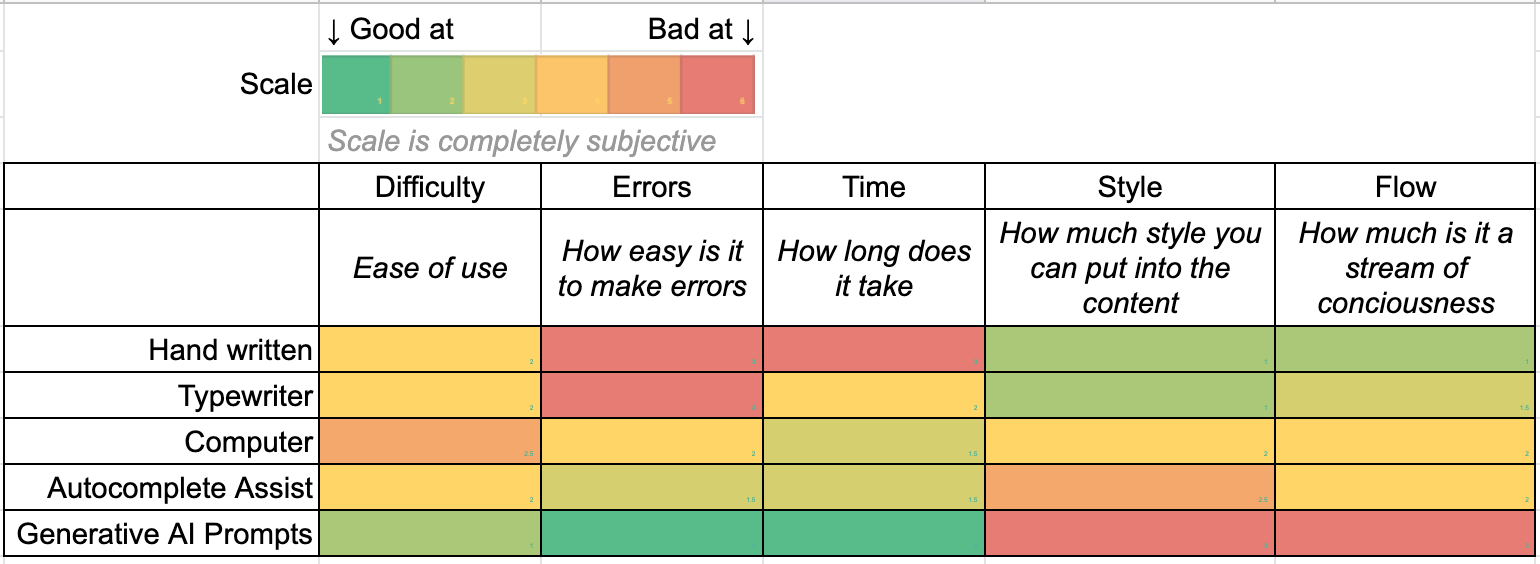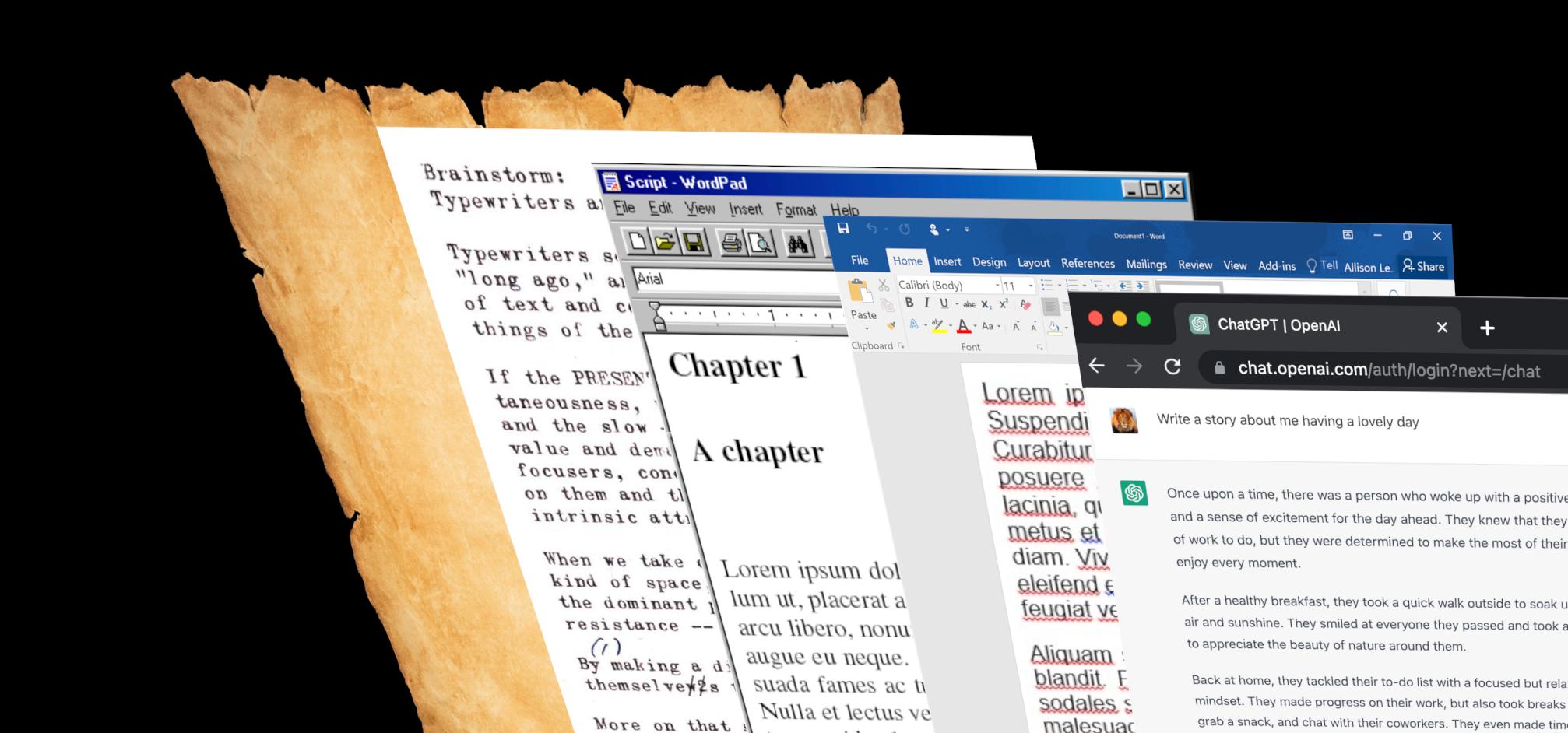There’s been many recent revolutions in writing technologies, and I thought it would be interesting to compare them and the way they affect the author’s ideas.
We can break down the methods of writing into several technological categories. Each new invention builds on the previous technology, improving writing in different ways.
Hand written
Somewhere in the beginning there was “cave painting”, and soon after came written language. Writing by hand allows allows a complete stream of thought, what you are thinking goes directly onto the page. However this also means that grammar and spelling errors are recorded too. Fixing those errors takes time and constant drafting and revising.

Typewriter
Then came the type writer, a device to make writing easier and quicker. This machine allowed the writer to focus on the content rather than having to manually draw each character. It doesn’t stop errors though, this still requires drafting and iteration (although messiness was eliminated).

Computers
A relatively short time later, computers were born and writers loved them. This improved version of the typewriter allowed writers to modify the text before committing it to physical paper. Fixing errors was even faster and easier.

Autocomplete
And eventually the computer was fast enough to check error’s for you, with the invention of “Autocomplete”. This feature could show you which words were not in the dictionary and which sentences had grammatical errors. Sometimes it was right, sometimes it was way off, but you would usually always see the computer suggesting something to you. Fixing errors became almost instantaneous as you wrote.

Generative AI Prompts
From the bleeding edge of writer’s technology comes Generative AI Prompts. These systems expand on your input, and can output many paragraphs of well-written original content, based only on a single sentence. This technology makes basically no errors, so nothing needs to fixed from the output.

The Effects
All these machines have minimized time and errors in your writing. But in doing so they’re becoming a bigger and bigger part of the writing process, until these machines can write entire pieces with minimal instruction.
But it’s interesting to watch the gradual effects of this throughout the different forms of technology. Take for instance autocomplete, this computer-human feedback cycle can subconsciously alter what you write.
When you see suggestions from the computer, you often either pick a suggestion or ignore it. The better the suggestions are, the more likely you’ll accept the suggestion. This means the better the computer gets, the more it is writing and the less you’re writing.
With all this in mind, here’s a subjective table summarising my thought’s on each piece of writing tech:

Summary
It’s clear that these AI generative tools are great in excelling at all surface-level metrics. They’re easy to use, just type a request like you would to an employee and get a result. The output is always grammatically error-free with no misspelled words (facts are another matter). And compared to writing something yourself, they are extremely fast.
However, they aren’t great at expressing your personality as they’re trained on other people’s work. And even though you can quickly iterate to get what you want, you’re being subconsciously influenced by the suggestions given by the AI. Which means you’re not actually recording your stream of thought, it’s the stream of thought from the AI. These two points are what arguably what gives humanity to your writing.
The advancements in writing technology are amazing and have given individuals incredible power to produce high quality content. I just hope people still enjoy the act of low-tech writing in the future.
Typed by Ben Winding, without AI assistance
